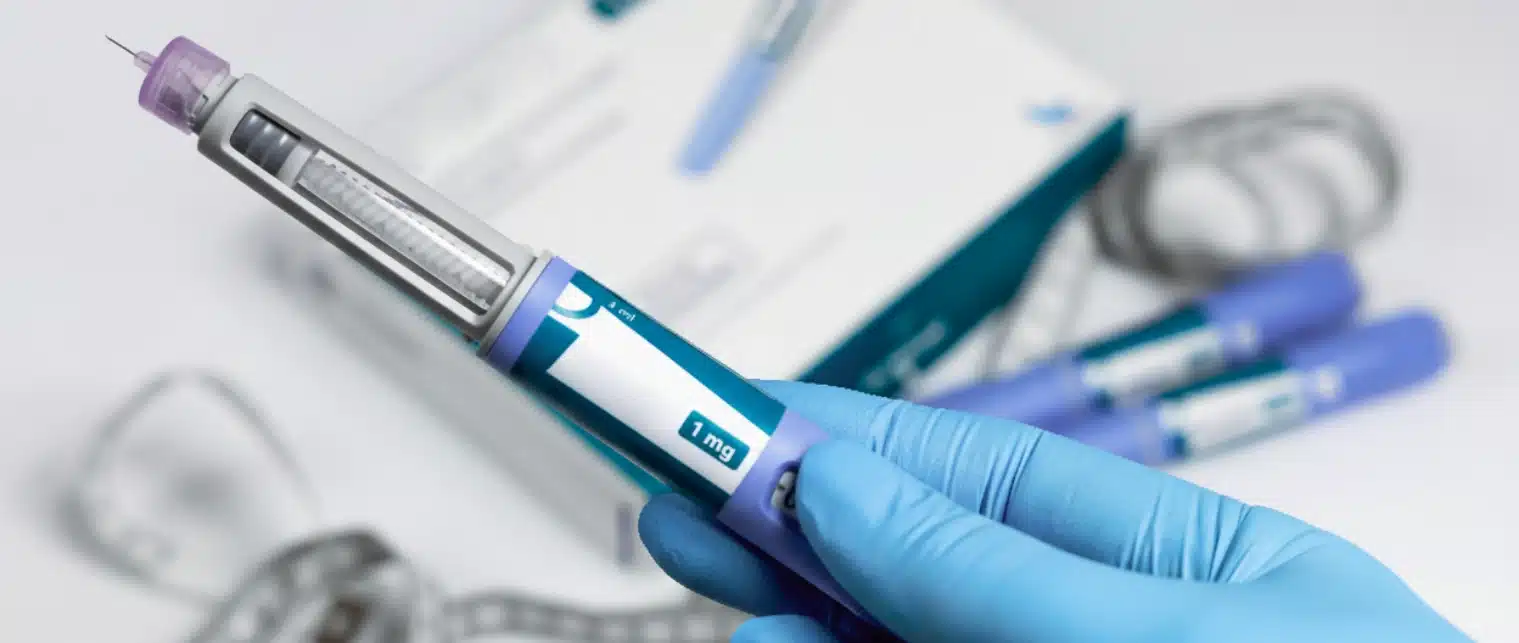Takeaways
- Bimagrumab plus GLP-1 therapy may preserve muscle while promoting near-total fat loss.
- Protecting lean mass improves long-term strength, metabolism, and quality of life.
- Functional outcomes, not just body composition, will shape future clinical approval.
The Shift Toward Quality Weight Loss
Weight loss medicine has entered a new era. The focus no longer centers only on numbers lost on the scale but on what the body loses. Traditional weight loss approaches often involve indiscriminate shedding of both fat and lean mass. The rapid rise of GLP-1 receptor agonists brought impressive fat reduction but exposed a critical drawback: significant muscle loss. As treatments grow more potent, the side effects demand sharper attention. Researchers and clinicians now aim for interventions that preserve muscle while reducing fat. This shift reflects a growing demand for results-focused approaches like our medical weight loss program that prioritize strength, functionality, and long-term sustainability.
Why Muscle Loss Matters in GLP-1 Therapy
Muscle tissue plays a central role in metabolic stability, mobility, and healthy aging. Losing muscle during weight loss compromises resting metabolic rate and physical function. In GLP-1 monotherapy trials, up to 45 percent of total weight loss came from lean mass1. For older adults or individuals with low baseline muscle mass, this presents serious health risks. Lean tissue supports blood sugar regulation, protects bones, and enables daily activities with ease. When GLP-1 users lose muscle, they may become metabolically weaker even as their BMI improves. The medical community increasingly acknowledges this paradox. Preserving muscle during fat loss is not cosmetic vanity—it is critical for lifelong well-being.
Enter Bimagrumab: A Muscle-Sparing Antibody
Bimagrumab represents a new category of therapy. This monoclonal antibody binds to activin type II receptors, blocking the signals that suppress muscle growth via ActRII binding2. The myostatin and activin A pathways inhibit hypertrophy under normal conditions. Just as testosterone replacement therapy helps restore strength in men with hormone imbalances, bimagrumab disables the muscle-growth inhibitors governed by activin signals. Unlike appetite suppressants or calorie blockers, this drug actively shifts the body’s composition toward muscle-building. As interest in metabolic resilience grows, tools like bimagrumab create new avenues to protect what matters most—strength, mobility, and function.
Animal Models: A Case for Combination
Before clinical trials began in humans, researchers explored the dual approach in preclinical studies. Mice treated with both semaglutide and bimagrumab demonstrated rapid fat loss with preserved or even increased muscle mass. This occurred despite restricted caloric intake. Control mice receiving semaglutide alone lost significant lean mass alongside fat. Investigators also studied underlying mechanisms. Although Akt signaling influences muscle growth, experiments showed that bimagrumab retained efficacy even with partial Akt inhibition. These findings suggest multiple muscle-sparing pathways operate under ActRII blockade. Such synergy in animal models provided a compelling rationale for human trials. The early science supported the idea that bimagrumab could offset GLP-1–induced muscle depletion.
Human Evidence: Insights from the BELIEVE Trial
At ADA 2025, researchers unveiled key findings from the BELIEVE Phase 2 trial. This pivotal study tested the combination of semaglutide and bimagrumab in adults with obesity but without diabetes. Participants who received the combo lost an average of 22.1 percent of their total body weight over 72 weeks. Critically, 92 to 93 percent of that loss came from fat mass. In contrast, semaglutide alone produced about 71.8 percent fat loss, meaning over a quarter of weight lost was lean tissue3. Some participants in the combo group even gained lean mass during the study. Quality-of-life metrics, such as physical function scores, improved more in the combination group than in either monotherapy arm. These data redefined expectations around body composition outcomes. For the first time, a pharmacologic combo delivered near-total fat loss with concurrent muscle preservation.
Other Human Trials & Competitive Strategies
Outside the BELIEVE trial, other clinical programs have tested ways to protect muscle during weight reduction. Regeneron’s COURAGE study explored dual antibodies targeting myostatin and activin A, paired with GLP-1 therapy. Interim results showed promising muscle retention. Up to 80 percent of the expected lean mass loss was avoided in some arms4. These results suggest that multiple therapeutic angles may protect muscle under calorie-restricted conditions. Yet not every strategy has succeeded. Eli Lilly recently halted its own trial combining tirzepatide with bimagrumab, citing strategic reasons. Whether the termination stemmed from safety signals, limited efficacy, or resource reallocation remains unclear. Despite this, enthusiasm for lean-mass-preserving approaches continues to grow in the endocrinology and obesity fields.
How the Combo Works: Mechanisms Behind the Synergy
Semaglutide acts through the GLP-1 receptor, slowing gastric emptying, increasing satiety, and lowering caloric intake. Bimagrumab operates differently, targeting muscle-specific signaling through the activin/myostatin pathway. When used together, one agent reduces energy intake while the other alters the body’s tissue balance. This pairing results in not just net weight loss, but selective loss of adipose tissue. Preclinical studies confirmed that bimagrumab prevented the typical muscle atrophy seen during caloric deficits. Unlike exercise alone, which stimulates muscle via mechanical pathways, bimagrumab directly removes biochemical growth suppression. These complementary actions create a powerful effect. One shrinks fat stores; the other shields or grows muscle.
Preserved Muscle ≠ Functional Muscle: Why Strength Still Matters
Holding on to lean mass counts for little if the tissue lacks strength or utility. Trials like BELIEVE measured body composition but did not extensively assess function. Questions remain around whether retained muscle truly translates into grip strength, endurance, or stair-climbing ability. Muscle quality involves mitochondrial density, fiber type, and neuromuscular recruitment—not just size. Upcoming trials must include functional metrics to confirm clinical relevance. Regulatory bodies may require demonstration that patients feel and perform better, not merely look different on scans. Preserved lean mass must empower movement, reduce falls, and sustain independence, especially in older adults. Until those endpoints become standard, the value of retention must be viewed through both a physiological and functional lens.
Preserving lean muscle during weight loss requires a multi-angle approach. This table compares leading strategies by type, effectiveness, and accessibility to help readers understand their options.
| Strategy | Type | How It Works | Evidence Strength | Current Availability |
|---|---|---|---|---|
| Bimagrumab + GLP-1 Combo | Pharmaceutical | Blocks muscle growth inhibitors while enhancing fat loss via appetite suppression | High (Phase 2 clinical trials) | Research setting only |
| Resistance Training | Lifestyle | Stimulates hypertrophy and muscle strength through mechanical load | Very High (decades of data) | Universally accessible |
| High-Protein Diet | Nutritional | Maintains nitrogen balance and muscle protein synthesis during caloric restriction | High (clinical and observational studies) | Widely available |
| Myostatin Inhibitors (e.g. garetosmab) | Pharmaceutical | Inhibits myostatin to prevent muscle breakdown | Moderate (early human data) | Experimental use |
Regulatory and Safety Considerations
ActRII blockers affect more than skeletal muscle. These receptors play roles in reproductive, cardiac, and immune tissues. Long-term suppression raises concerns about unintended organ effects or tumor risks. Clinical trials to date report tolerability, but larger and longer studies must confirm safety. Bimagrumab is also an intravenous agent, which may limit accessibility or compliance outside specialty settings. Regulators may hesitate to approve new drug classes without functional outcomes or hard endpoints. The FDA typically demands data showing reduced morbidity or improved quality of life. For the muscle-sparing combo to succeed commercially and clinically, safety must be matched with tangible benefits. Large-scale Phase 3 trials remain the necessary next step.
The Road Ahead: What’s Needed for Approval and Adoption
To reach widespread use, bimagrumab + GLP-1 combinations must prove their value beyond composition. Trials must enroll diverse populations, including postmenopausal women, older adults, and sarcopenic patients. Function-based outcomes—like chair rise time or walking distance—should become standard. Payers and policymakers will want to see cost-effectiveness compared to GLP-1 monotherapy. Real-world evidence, collected through digital health tools or EMR-based registries, can provide valuable insight. Education also plays a role. Patients and providers need to understand why preserving lean mass matters. At Fountain of Youth SWFL, our clinical team stays at the forefront of muscle-centric weight management innovations, helping clients achieve meaningful, sustainable results. The future lies not just in shrinking waistlines but in protecting the engines that power our lives. Our rejuvenation and healing therapies align with this philosophy by promoting functional recovery alongside aesthetic progress.
3 Practical Tips for Patients and Providers
Monitor Lean Mass Actively
Weight alone can mislead. Track body composition with tools like DXA or bioelectrical impedance systems.
Strength Train While on GLP-1
Resistance exercises counteract muscle loss. Pairing strength workouts with targeted support like our performance IV drips can further accelerate muscle recovery.
Ask About Body Composition Goals
Don’t settle for scale-based targets. Discuss fat-versus-lean goals with your provider and tailor your plan accordingly.
Questions? We’re here to help. Call our team at 239-355-3294 to discuss your weight management options.
FAQ: Bimagrumab, GLP‑1, and Muscle Preservation
Does bimagrumab cause any side effects different from GLP‑1 drugs?
Yes, bimagrumab may produce side effects related to its action on the activin pathway, including mild increases in liver enzymes or potential muscle soreness. Unlike GLP-1 drugs, it does not typically cause nausea or GI upset. So far, major adverse effects remain rare but need longer studies to confirm safety. Always consult with your provider about risks based on your health profile.
Is this combination available for use now or still under research?
As of late 2025, this combination remains in the research stage and is not yet FDA-approved for general use. The BELIEVE trial delivered strong Phase 2 data, but Phase 3 confirmation is still pending. Patients interested in the approach may consider clinical trial enrollment or discuss future options with specialized providers.
Can muscle loss on GLP‑1 be reversed after it happens?
In many cases, yes. Muscle recovery depends on age, diet, activity level, and medical conditions. Resistance training and protein intake support muscle rebuilding. However, prolonged or extreme losses may not fully reverse in older or frail individuals. Early intervention to preserve muscle remains the best strategy.
How much lean mass is considered “safe” to lose during weight loss?
There is no universal cutoff, but experts generally recommend that less than 20 to 25 percent of weight loss come from lean mass. Losing more than that may increase risk for strength decline or metabolic slowdown. Monitoring body composition helps keep losses within that safer threshold.
Medical review: Reviewed by Dr. Keith Lafferty MD, Medical Director at Fountain of Youth SWFL on November 1, 2025. Fact-checked against government and academic sources; see in-text citations. This page follows our Medical Review & Sourcing Policy and undergoes updates at least every six months. Last updated November 1, 2025.




